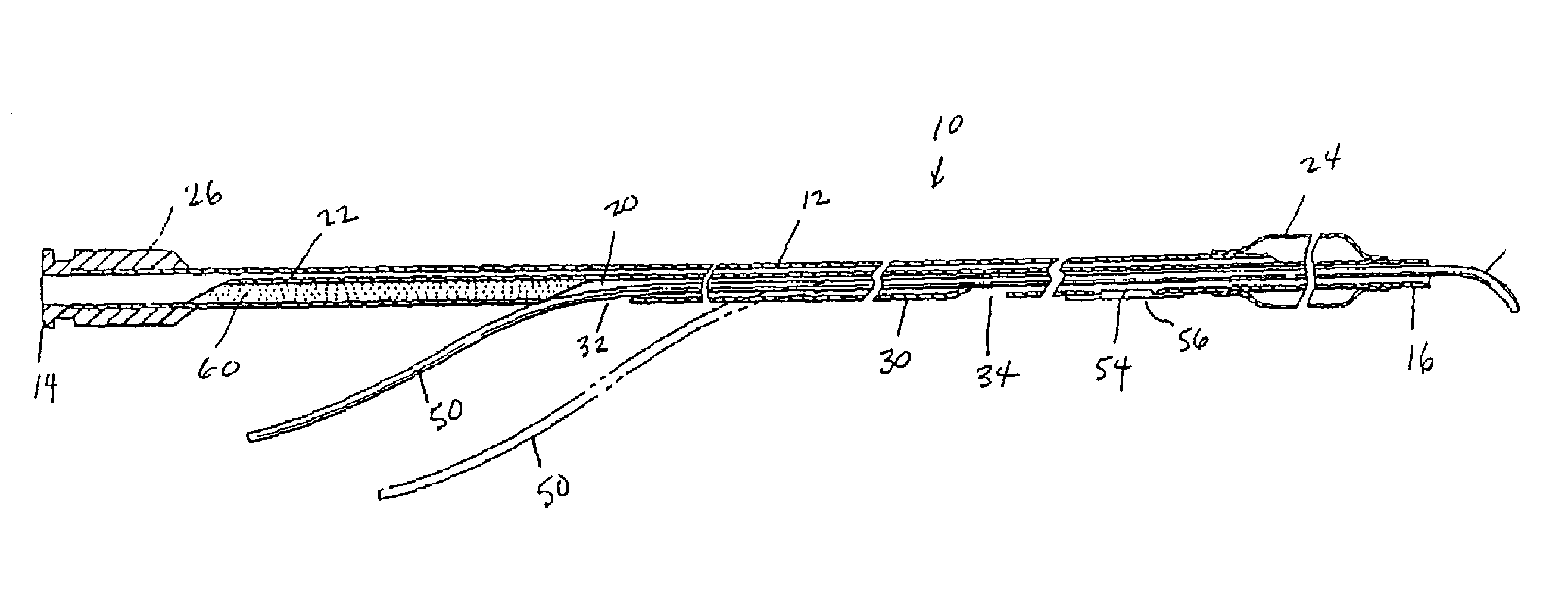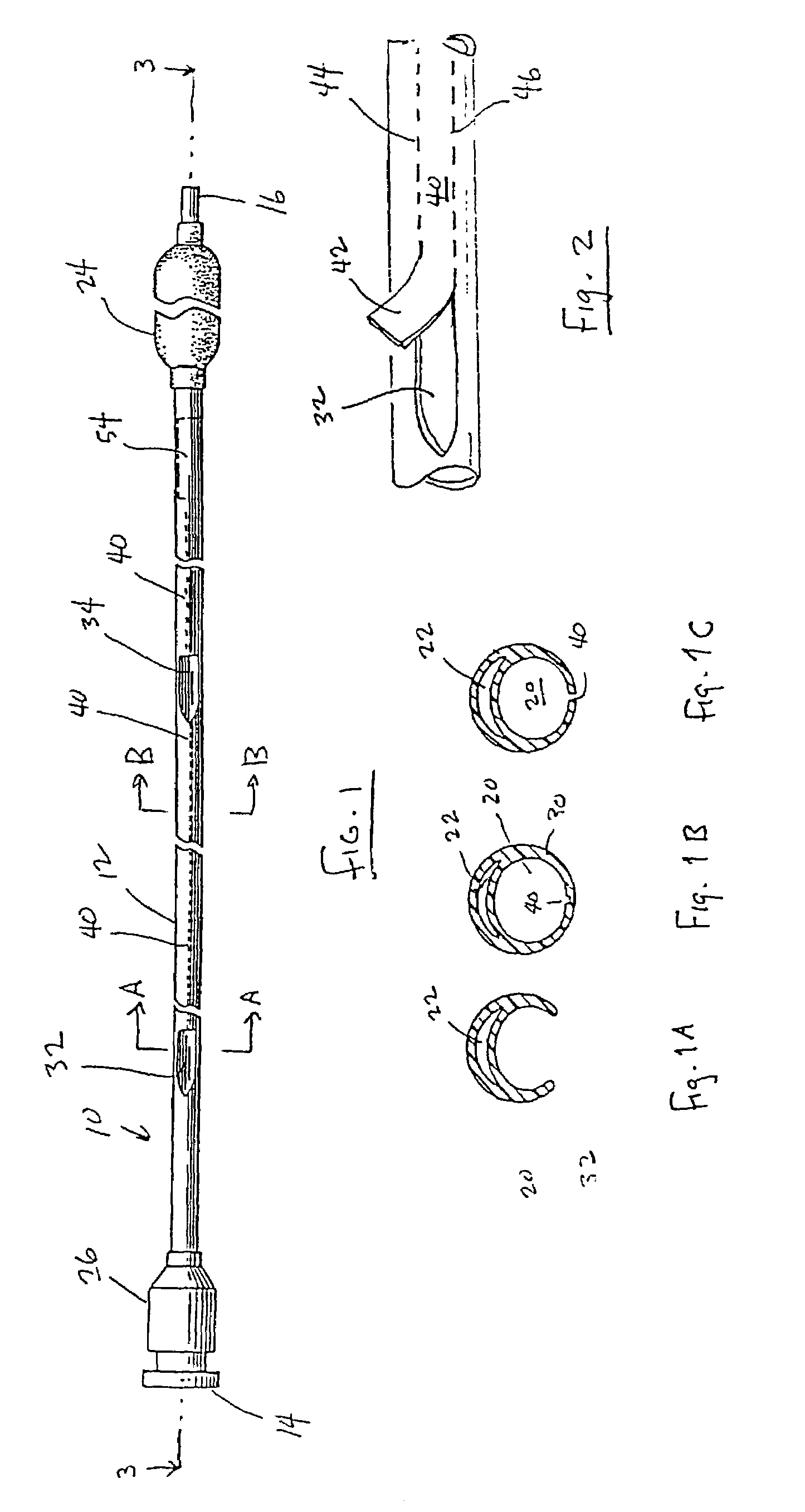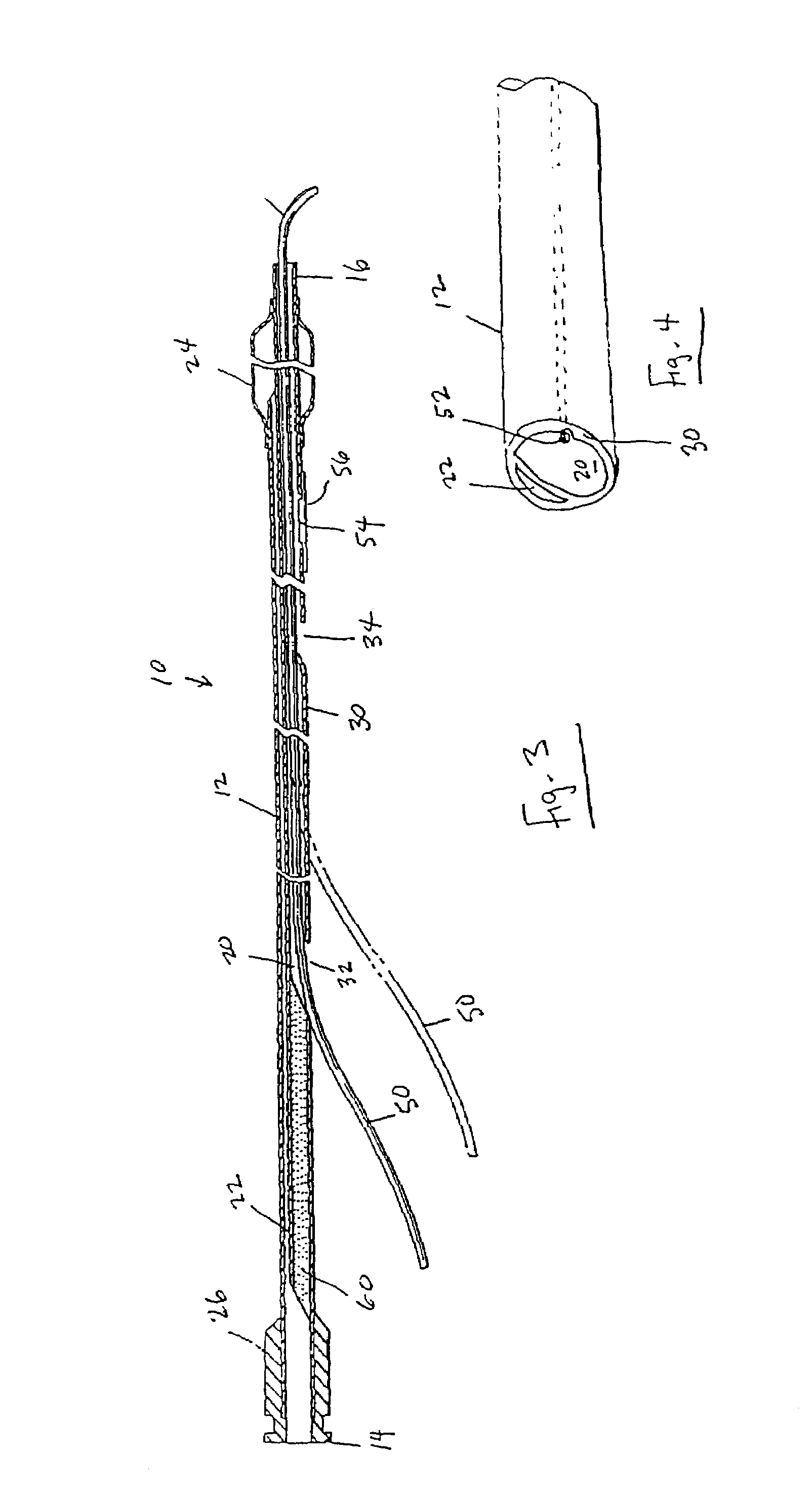Convertible mode vascular catheter system
a vascular catheter and avertible mode technology, applied in the field of vascular catheters, can solve the problems of affecting the service life of the catheter, the inability to permit the ready exchange of guidewires, and the damage of the guidewire tip
- Summary
- Abstract
- Description
- Claims
- Application Information
AI Technical Summary
Problems solved by technology
Method used
Image
Examples
Embodiment Construction
[0036]A basic embodiment of the catheter of the present invention is illustrated in FIG. 1. A catheter 10 is provided with a catheter shaft 12 extending from a proximal end 14 to a distal end 16. As shown more clearly in FIG. 1B, the interior of the catheter shaft 12 has a guidewire lumen 20 and a balloon inflation lumen 22 extending through the catheter shaft 12.
[0037]The catheter 10 has an angioplasty balloon 24 at the distal end 16 thereof. At the proximal end 14 of the catheter shaft 12, a balloon inflation connector 26 is provided in fluid communication with the balloon lumen 22. Fluid introduced into the proximal end of the balloon inflation connector 26 can travel through the balloon lumen 22 and into the interior of the balloon 24 to inflate and deflate the balloon 24 during an angioplasty procedure. The balloon inflation lumen 22 terminates inside the balloon 24. The opposite end of the balloon inflation lumen 22 terminates inside the balloon inflation connector 26.
[0038]Th...
PUM
 Login to View More
Login to View More Abstract
Description
Claims
Application Information
 Login to View More
Login to View More - R&D
- Intellectual Property
- Life Sciences
- Materials
- Tech Scout
- Unparalleled Data Quality
- Higher Quality Content
- 60% Fewer Hallucinations
Browse by: Latest US Patents, China's latest patents, Technical Efficacy Thesaurus, Application Domain, Technology Topic, Popular Technical Reports.
© 2025 PatSnap. All rights reserved.Legal|Privacy policy|Modern Slavery Act Transparency Statement|Sitemap|About US| Contact US: help@patsnap.com



